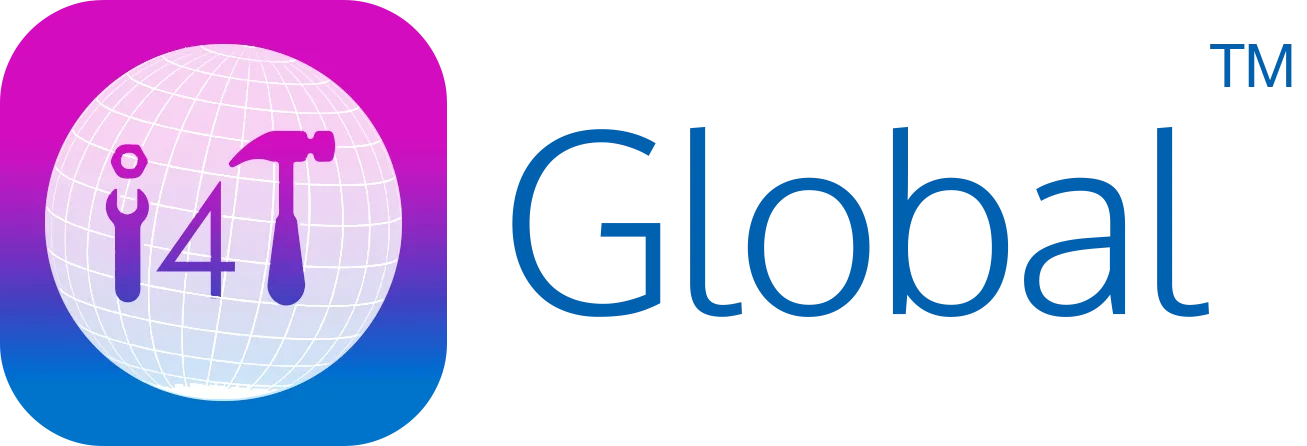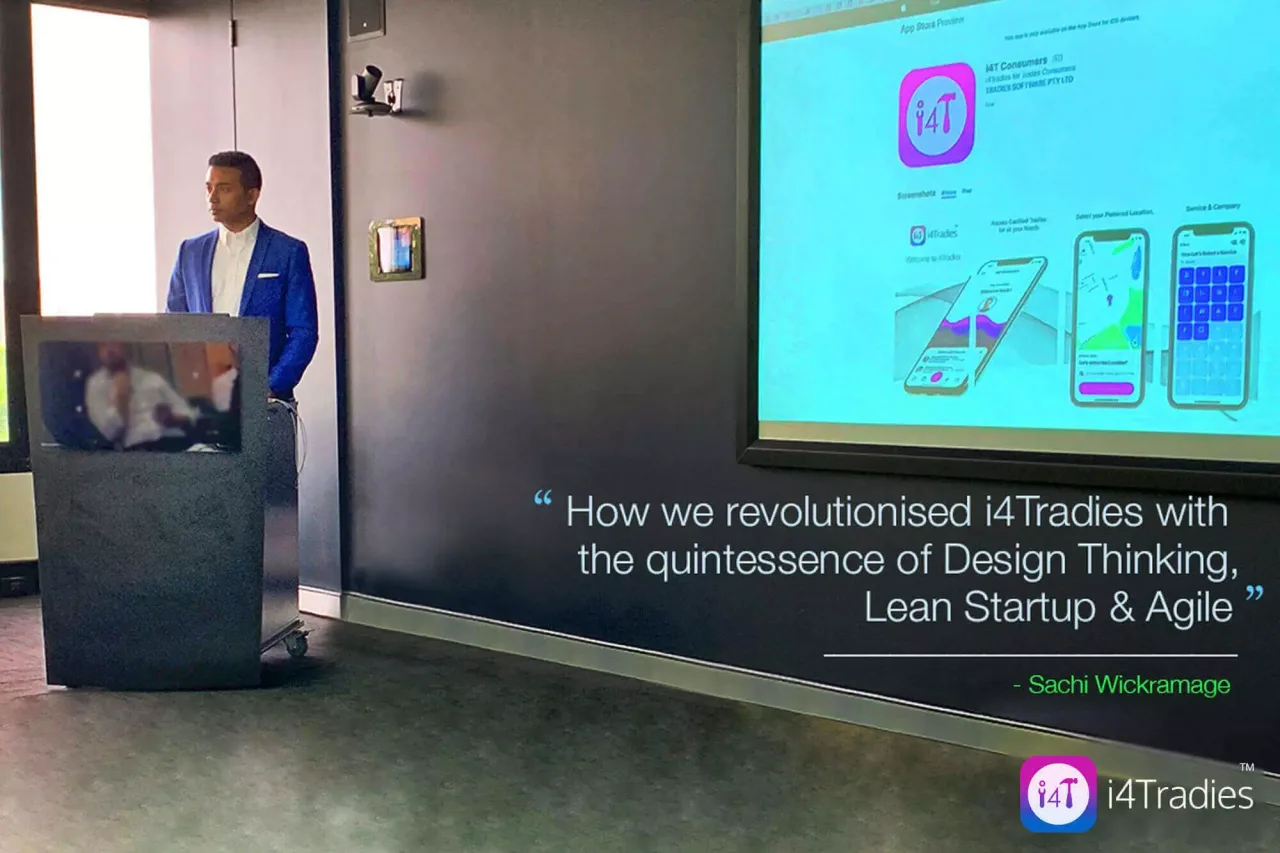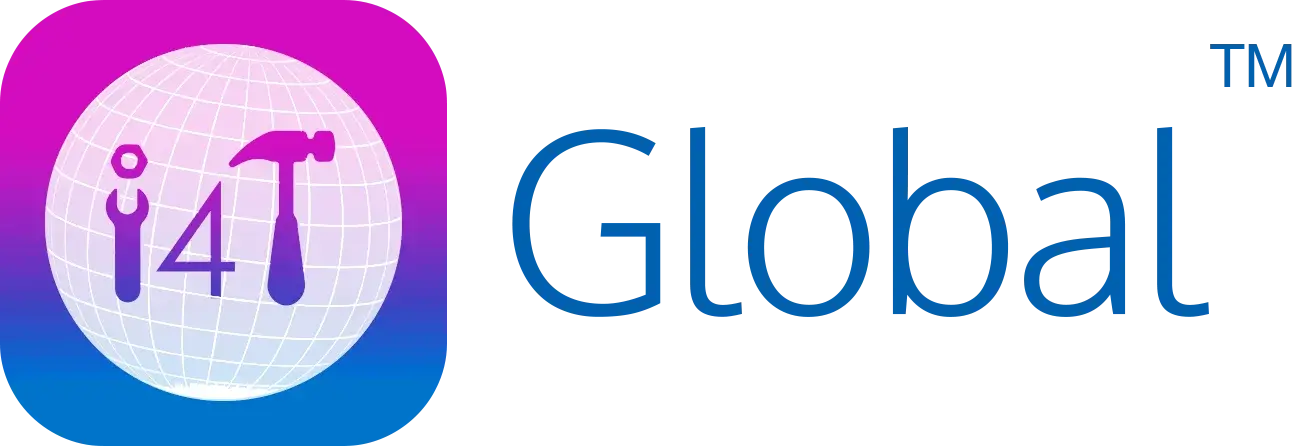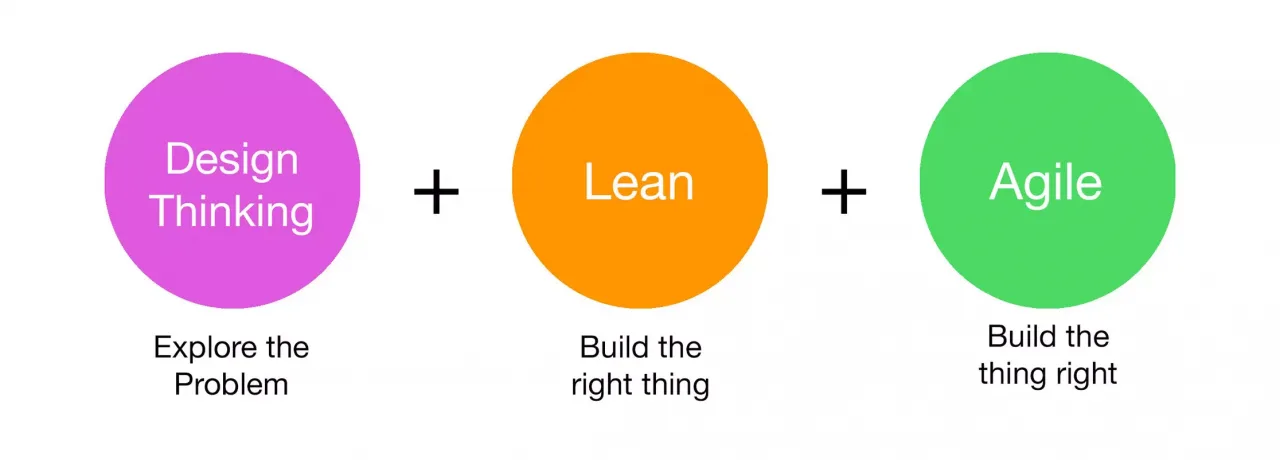
When we look back for several decades, we can identify the roots of HCI. Human Computer Interaction (HCI) is the discipline that most of us think of as UI design. It focuses on the way that human beings and computers (devices & systems) interact to ever increasing levels of both complexity and simplicity. Underlying the whole theme of HCI is the belief that people using a computer system should come first. Their needs, capabilities and preferences for conducting various tasks should direct developers in the way that they design systems. People should not have to change the way that they use a system in order to fit in with it. Instead, the system should be designed to match their requirements.
Usability is one of the key concepts in HCI. It is concerned with making systems easy to learn and use. A usable system is:
- easy to learn
- easy to remember how to use
- effective to use
- efficient to use
- safe to use
- enjoyable to use
Fast forward to today, we hear more about Design Thinking
Design Thinking is about giving a comfortable solution to an existing problem, or making an existing solution better by empathising with the end-user.
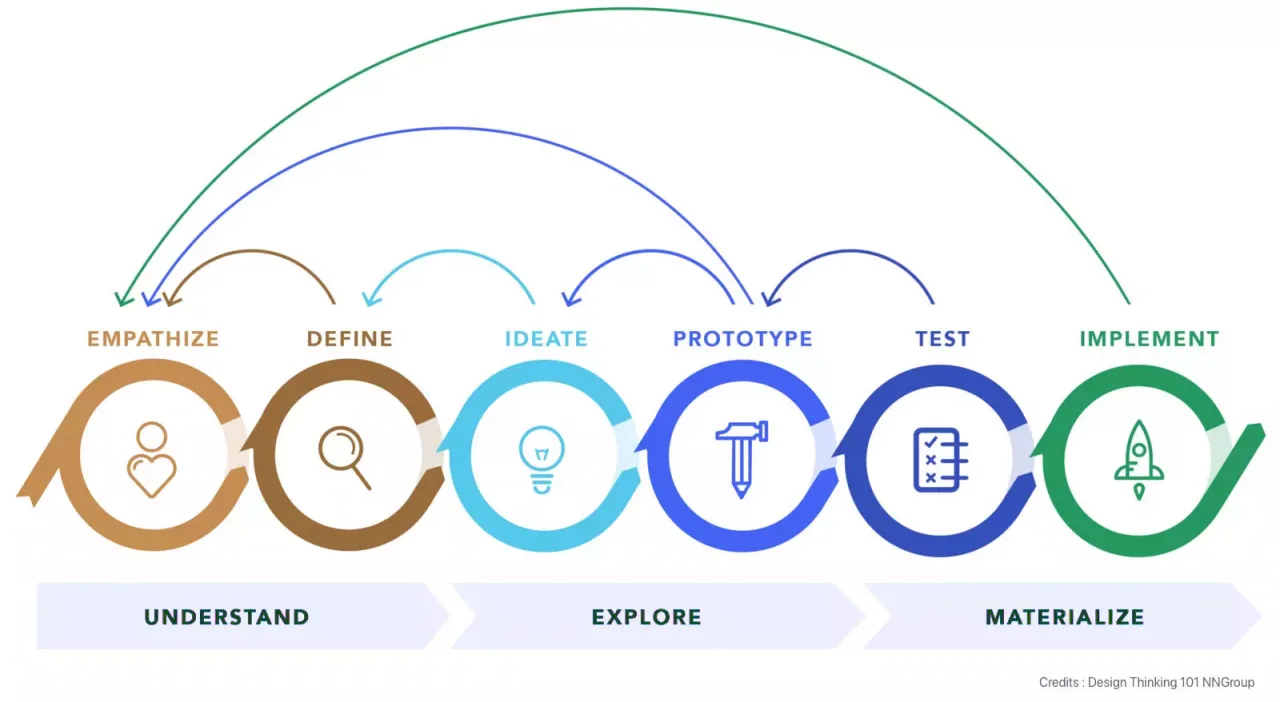
Imagine you want to build a simple Web application with usual Frontend, Backend and Database components. Now, if we implement design thinking for this software architecture, first of all we need to ask “How are we going to scale from single server to multiple servers?” or “How are we going to build our frontend layout for making later changes much easier?”.
The thing with Design Thinking is that we don’t get to build software to perform a required task today, it gives us a platform to think how to build software to perform existing tasks that can be changed and improved easily later on.
Design Thinking has made modern software architectures not Monolithic at all. They are all Microservice based, which means that you have a lot of little pieces running independently and communicating with each other over networking. This gives us great abstraction over software design and helps us come up with super scalable components which can be scaled up and down separately.
Lean UX focuses on the experience within a design and is less fixated on deliverables than traditional UX. Lean UX requires a greater level of collaboration with the entire team. The main objective is to focus on obtaining feedback as early as possible so that it can be used to make quick decisions. It is in the nature of Agile development to work in rapid, iterative cycles and Lean UX mimics these cycles to ensure that data generated can be used in each iteration.
The Minimum Viable Product (MVP) is a core concept in Lean UX. The idea is to build the most basic version of the concept as possible, test it and evaluate if there are no valuable results to abandon it. The MVPs which show promise can then be incorporated into further design and development rounds without too much hassle.

This is a great way of maximizing resources and one of the reasons that it works so well with Agile development is that it allows for a lot of experimentation.
In Agile software development, solutions take form through collaborations of teams and end-users that support iterative development, adaptive planning, empirical knowledge, evolutionary development and continuous improvement that supports rapid and flexible response to change.
Let’s see how i4Tradies adapted these disciplines to revolutionise the way trades services do business increasingly engaging with customers.
Origin of i4Tradies
Trades Services sector is valued at $15.4 Billion in Australia only. At the same time, we knew that this is one of the most disorganized industries which could sincerely benefit from a properly designed software platform to experience a well-deserved paradigm shift.
This was our inspiration to start i4Tradies.
From our initial feasibility study, we found out that there are 3 key user groups in this sector:
- Trades Business Owners who runs Trades Service Companies
- Tradies on-the-road who work as Employees for these Trades Service Companies
- Consumers at home who are the end-users for these Trades Service Companies
There were existing software solutions targeting at the 2 extremes.
- Trades Business Owners to manage their business operations from scheduling to invoicing, etc.
- Trades Directories/Listing Websites for Consumers to search for Tradies.
The fundamental problem was that these existing systems were isolated and they never connected the 3 user groups together to create a beautiful synergy amongst them. This mainly created concerns specially for Consumers (End-Users) by keeping them in the dark and not providing them with the level of Transparency they required.
A good example is a Trades Services company informing the Consumer that a Tradie will be visiting their premises to attend a job sometime between 10:00am and 2:00pm and not turn up, keeping the customer wandering having to sacrifice all work they may have.
Therefore, we wanted to design i4Tradies to be a cohesive platform which provides a seamless user experience to Trades Business Owners, Their Employees (Tradies) and most importantly to their Consumers (End-Users)
From ground up, we decided the key value propositions for our product should be Compliance, Efficiency, Security & Transparency.
In 2017, we first Launched i4Tradies as an MVP with a selected sample set of users who themselves were Tradies. We developed our product suite to have 3 dimensions tailored to fit the above main user groups.
Our initial offering was very basic yet it had the necessary core functionality and this is how it looked by then…

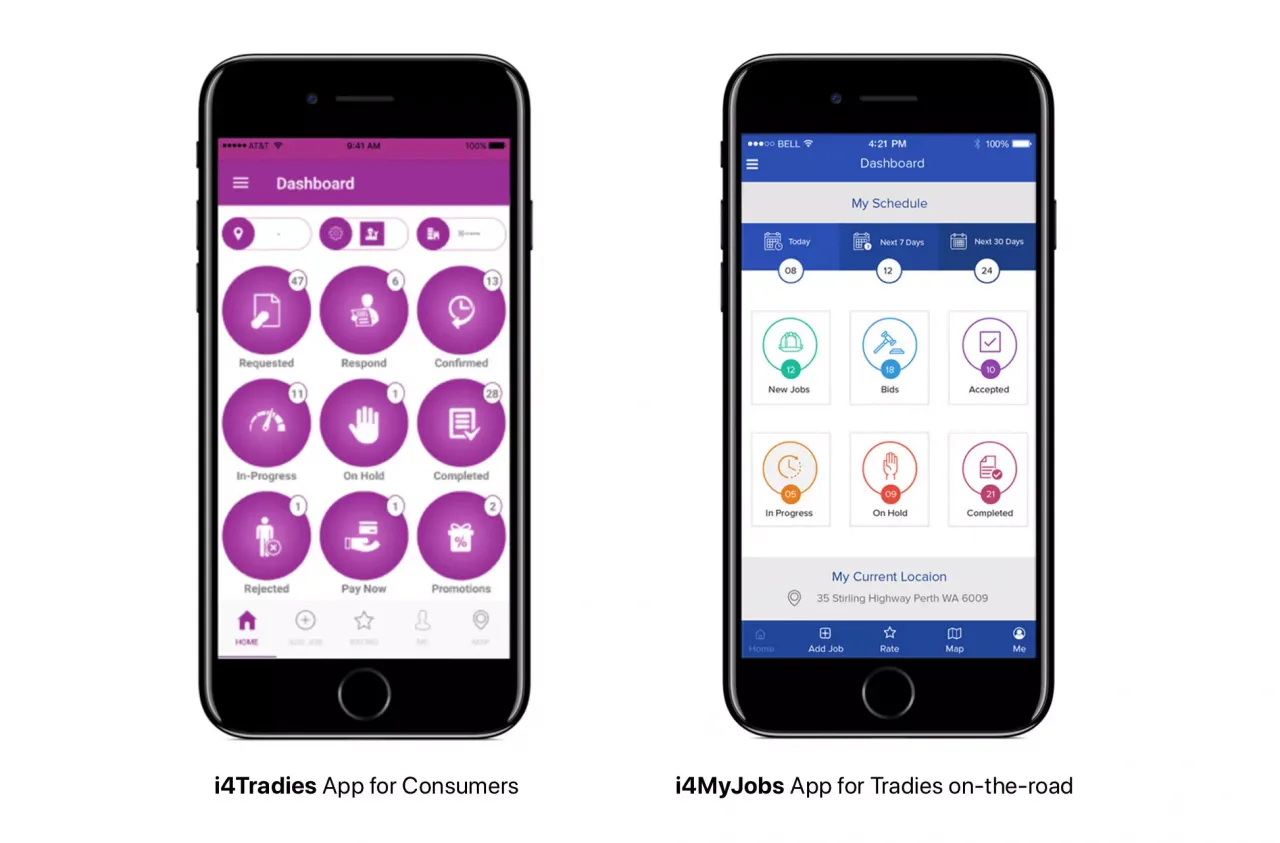
We had our MVP being used by the nominated target audience for 12+ months.
During this period, we gathered extensive levels of information on our 3 key user groups: Trades Business Owners, their Employees (Tradies) and what’s important to their Consumers (End-Users).
At the same time, we got increasing interest from new Trades Businesses from Australia as well as internationally to get onboard i4Tradies platform, but they all wanted very different set of features and they had their own unique desires.
Having collected this wealth of knowledge on customer expectations and product requirements, we then wanted to revolutionise i4Tradies with clear focus on our end Vision in mind.
It was mid 2018, at our i4Tradies Advisory Board meeting we announced to all our investors the news that we are going to reinvent and revolutionise i4Tradies and bring it to a whole new level.
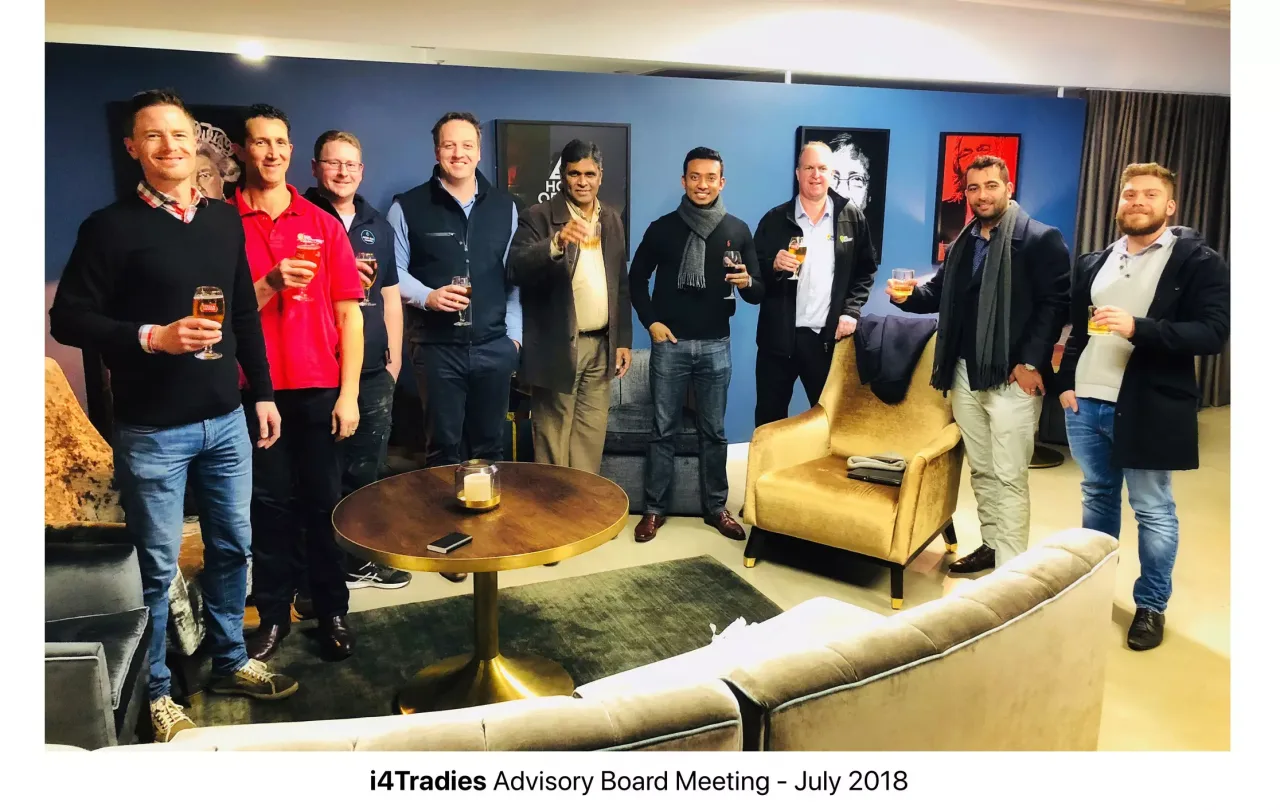
Even though we were very clear on what we have to do next, it was a very careful exercise we had to plan meticulously and execute in our best capacity to achieve perfection within our context.
Prior to joining forces with Logan, as the Co-Founder & COO of i4Tradies, in my 14+ years of experience in Software Industry, I had the opportunity to manage vast number of large & highly-scalable software/mobile projects for prominent customers around the globe.
I always noticed few identical patterns across all software & mobile projects I have worked on. That is, no matter how advanced or simple the project is it’s not about how much of a technical complexity and depth we inculcate in to software development, rather how simple, elegant & user-friendly we make these systems to the end-users is always the winning formula.
This was highly evident to me in my previous successful start-ups I co-founded. They resulted in winning large number of International Awards while mesmerizing millions of active users world-wide.
“I wanted to bring this collective wisdom to i4Tradies and reinvent and revolutionise it as a highly scalable platform which can span globally in a multi-currency, multilingual, multi-time zone deployment and having the maximum levels of dynamic configurability to cater to unique sets of requirements coming in from different customers.”
This is when I decided to bring in the combination of Design Thinking, Lean Startup and Agile on to the table.
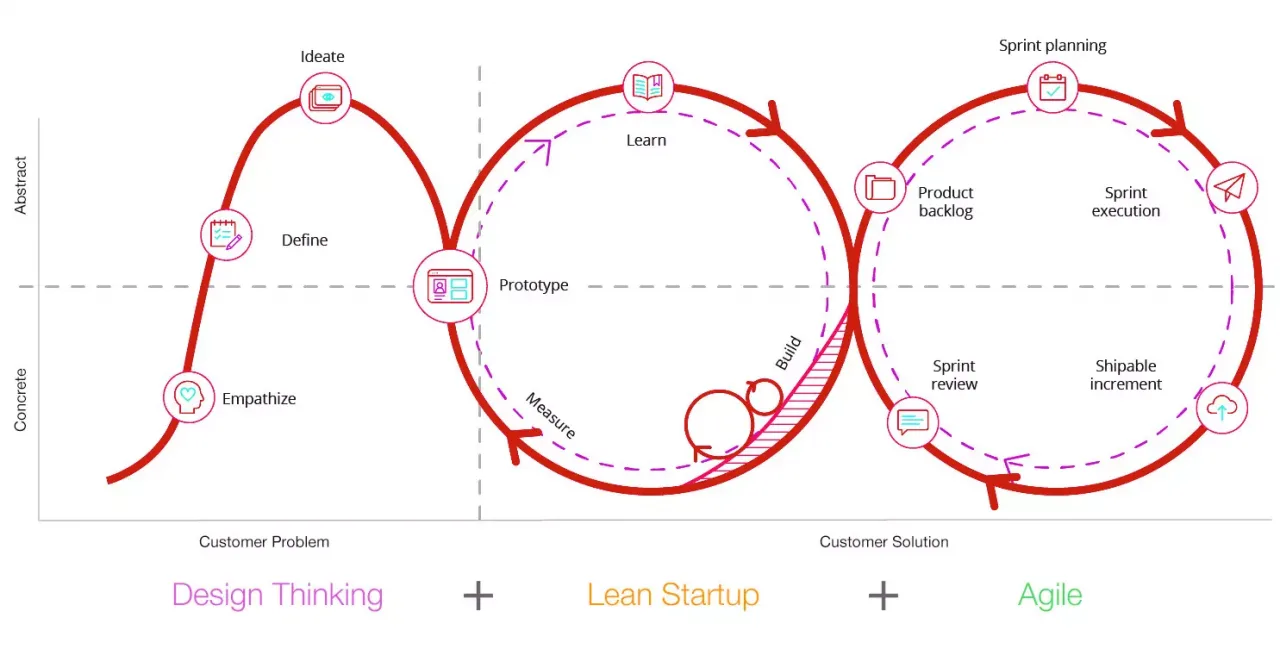
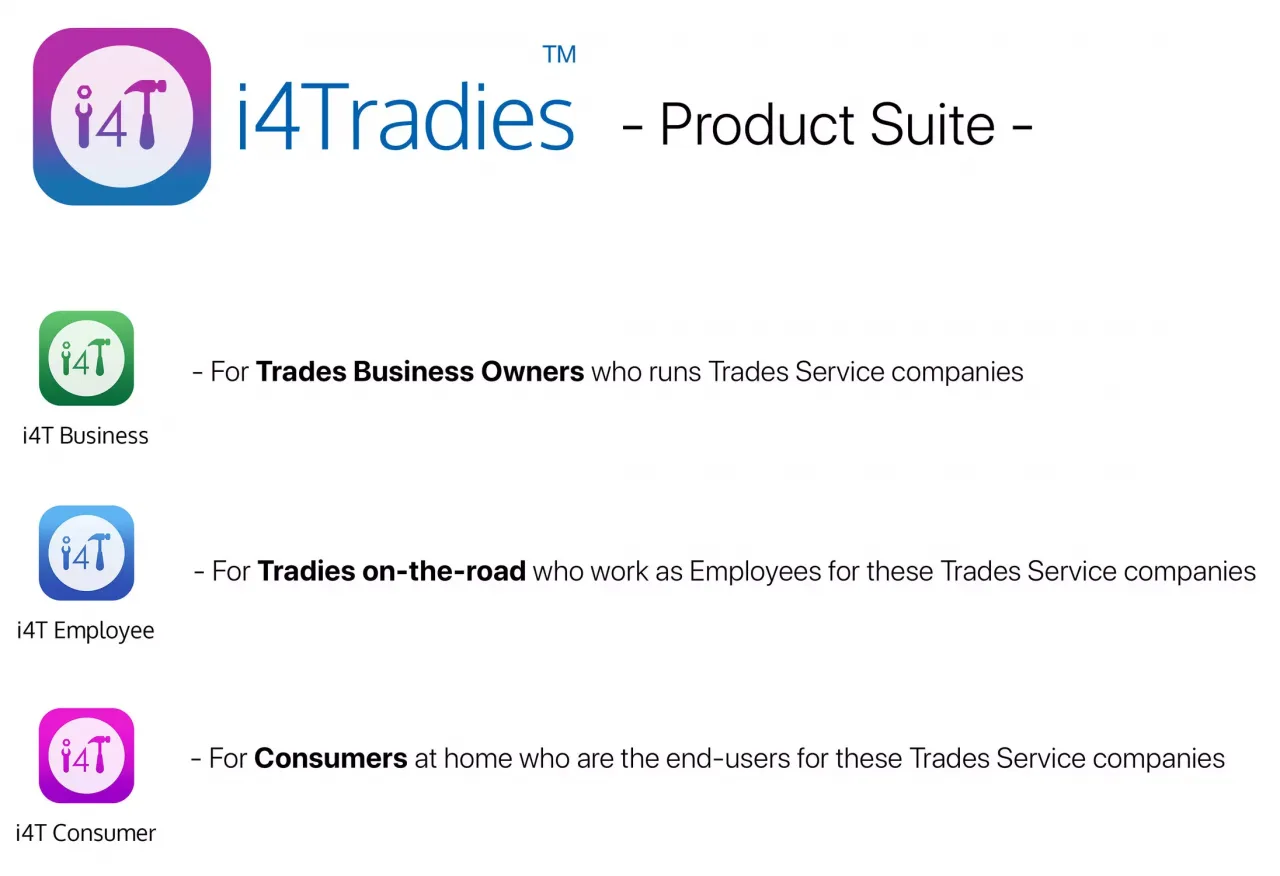
Then we wanted to look at each product vertical one-at-a-time. We decided to start with the Consumers (End-Users).
i4T Consumer
Our i4T Consumers app had a good coverage (75%) of functionality what customers need. But the biggest problem was it was bit too complicated for the non IT literate average user. When we think about our PTA and STA (Primary and Secondary Target Audiences) within this key user group, majority are ladies in their late 30s till late 50s followed by gents in their early 30s till their late 60s. Therefore, we wanted to simplify the i4T Consumer app to a greater extent where it requires no special learning curve.
Ideally a user should be able to understand the behaviour of the app and perform key functionality just by using the knowledge they have inherited from all day-to-day mobile apps they use such as Facebook, Instagram, Uber etc.
Transformation of i4T Consumer App over the last 24 months
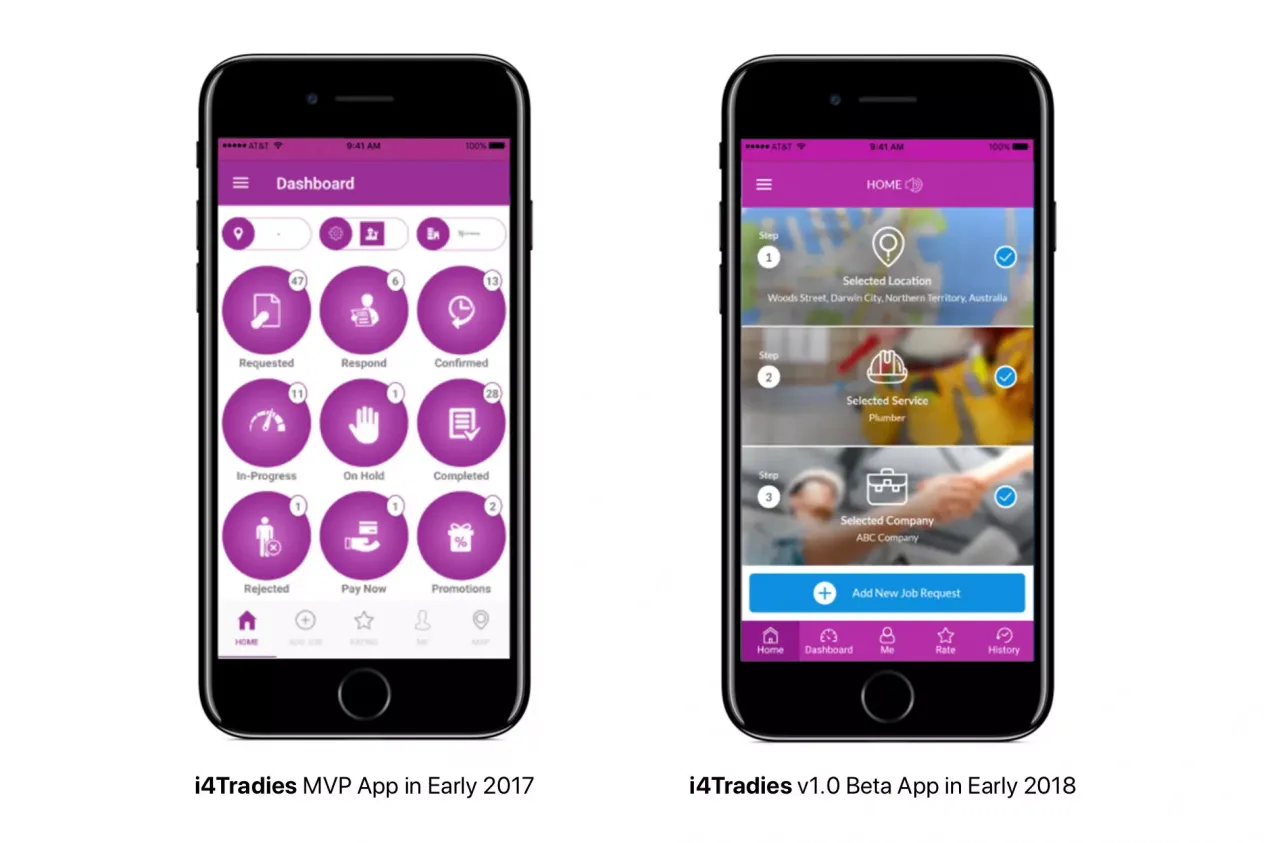
In early 2019 we relaunched i4T Consumers app with significantly advanced functionality yet making the app extremely simplified from the users’ perspective.

By introducing Design Thinking process, we gained an empathic understanding of the problem our users are facing.
Using the Lean Startup approach, we introduced order and reduced chaos with Build > Measure > Learn cycles. This helped us to validate our learning and continue to innovate our offering.
“From the ground up we designed the app to be multi-layered. We also used layer translucency with the aim of providing the user with complete contextual awareness throughout the app. Users might not directly understand any of these concepts while using the app. However, it will have a powerful influence in their mind by psychologically making them feel more comfortable to use the app.”
One of the common mistakes we are guilty as software developers is that we try to transfer our internal problems on to the users to solve.
A good example of this is a typical Login screen of an app where it asks the question from the user such as:
- Existing User? – Login Now
- New User? – Sign Up
If we empathise on behalf of the end user, we can realise that this is not a question we need to ask from the user. This is our responsibility as software developers to intelligently solve this problem without putting it to the user to make a choice.
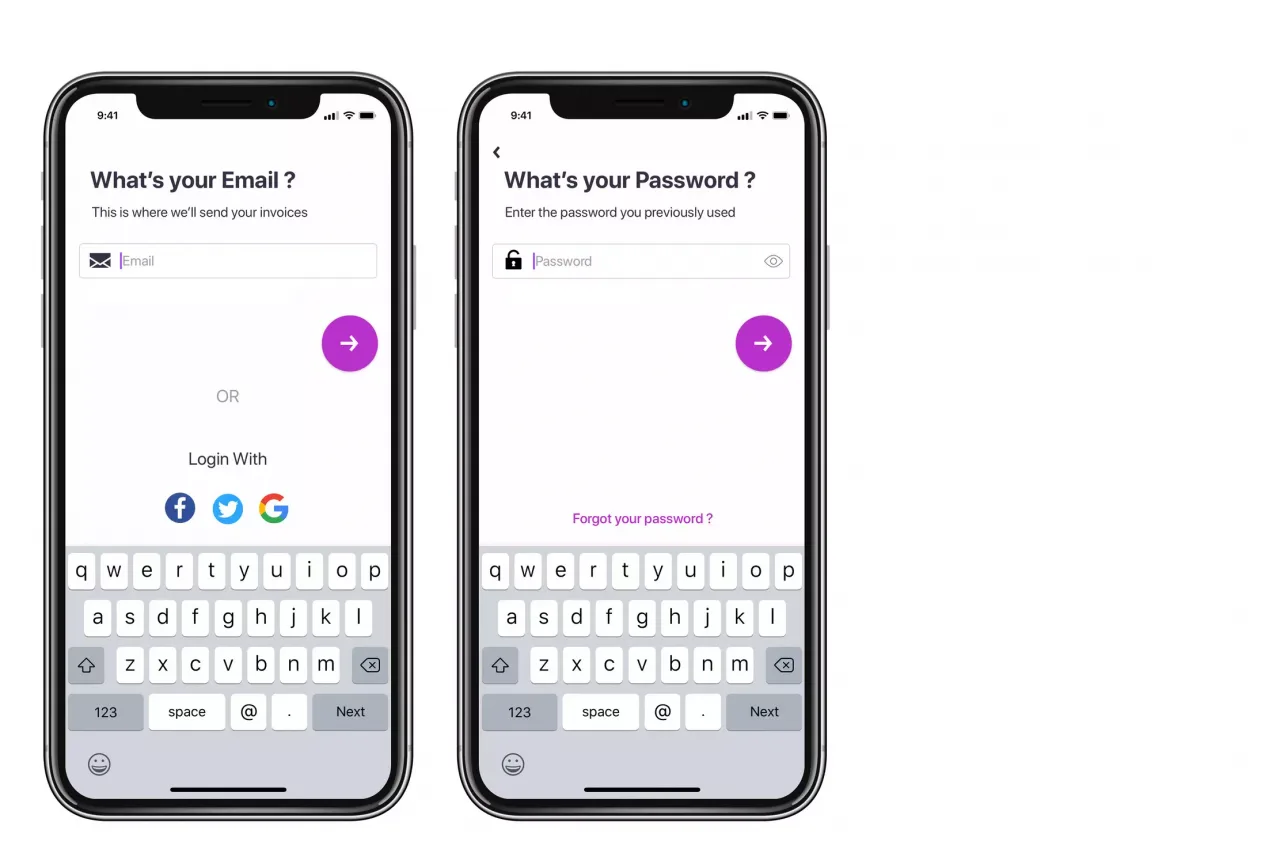
We simply ask the user to enter their Email Address. Then we validate the entered email address with i4Tradies to identify the solution to the question “is this an Existing User OR a New user?”. Based on this validation we then navigate the user on 2 different routes.
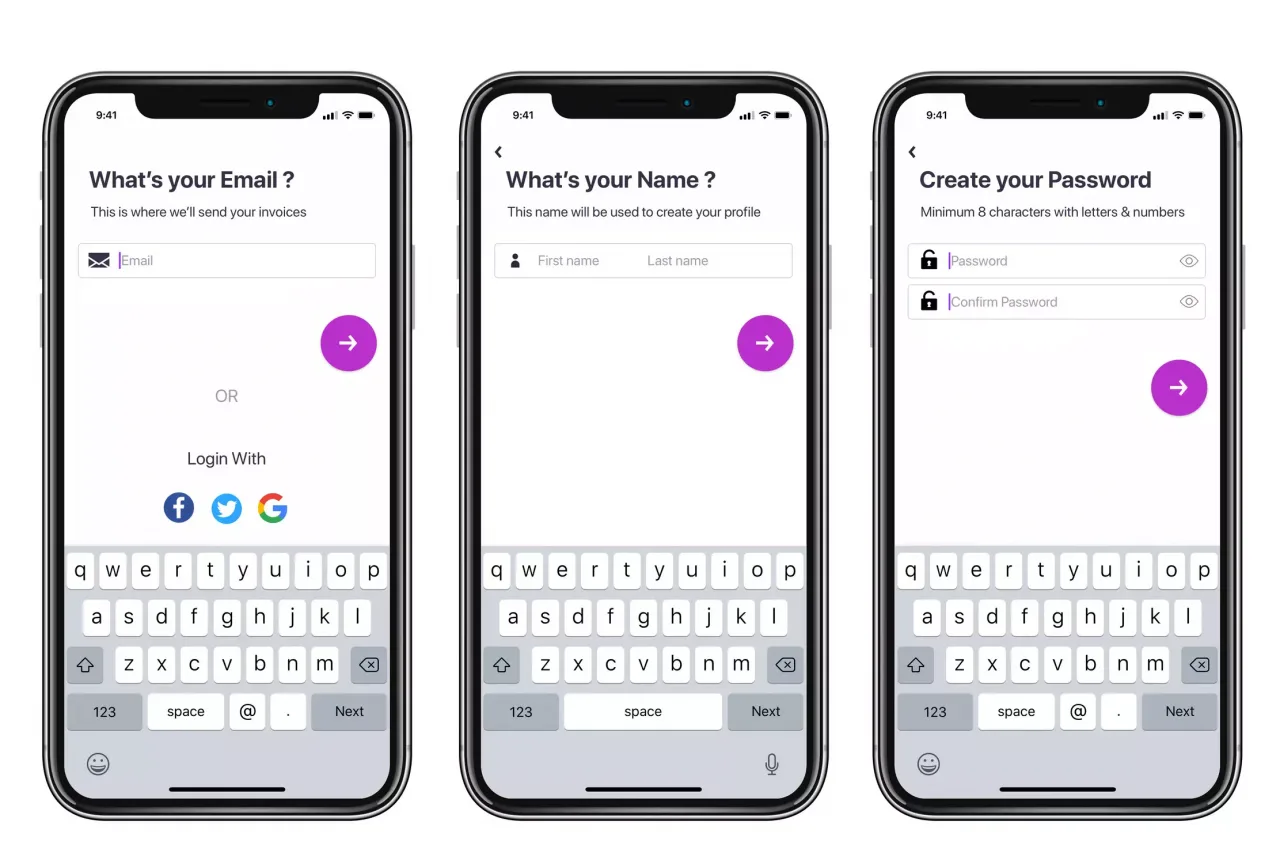
We simply ask the user to enter their Email Address. Then we validate the entered email address with i4Tradies to identify the solution to the question “is this an Existing User OR a New user?”. Based on this validation we then navigate the user on 2 different routes.
i4T Business & i4T Employee
When reimagining i4T Business, we knew we will be introducing 10X more advanced functionality to the platform and it’s going to make the platform highly comprehensive. Therefore, we wanted to come up with a clear visual simplification starting all the way from the colour palette itself.
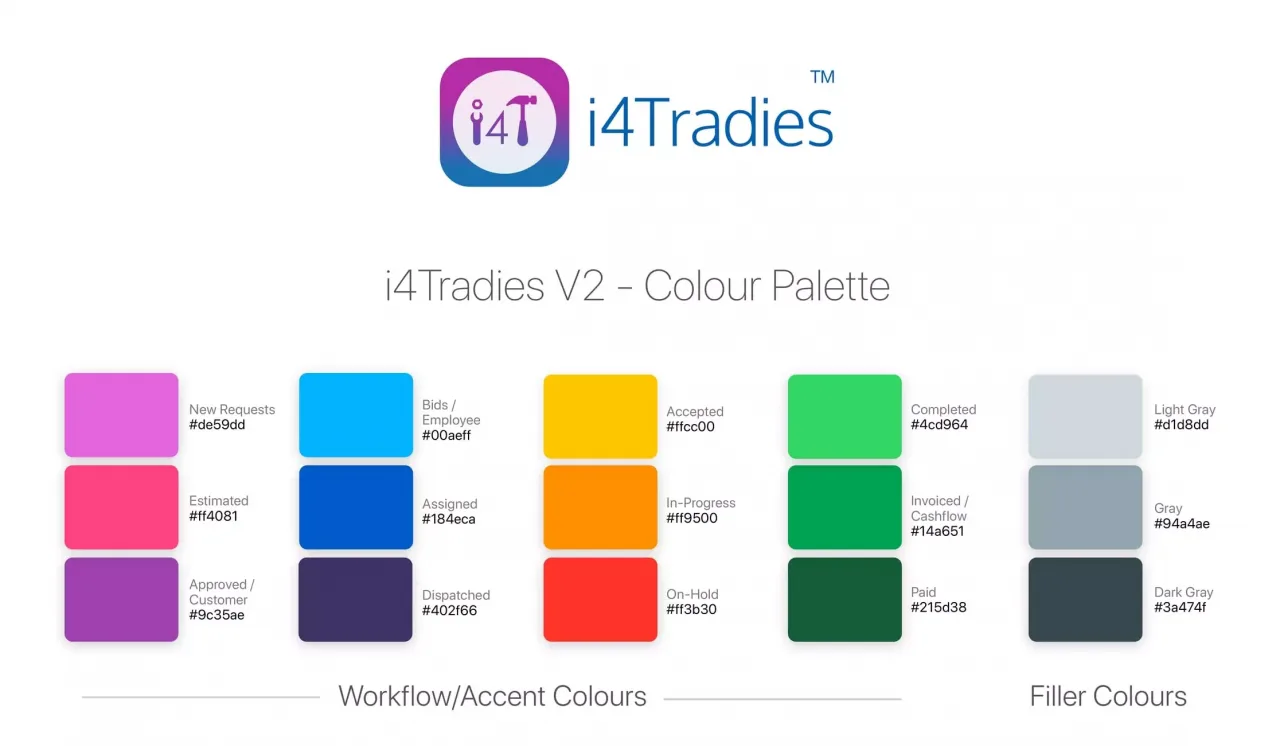
Entire Job Workflow is systematically colour-coded for rapid visual comprehension
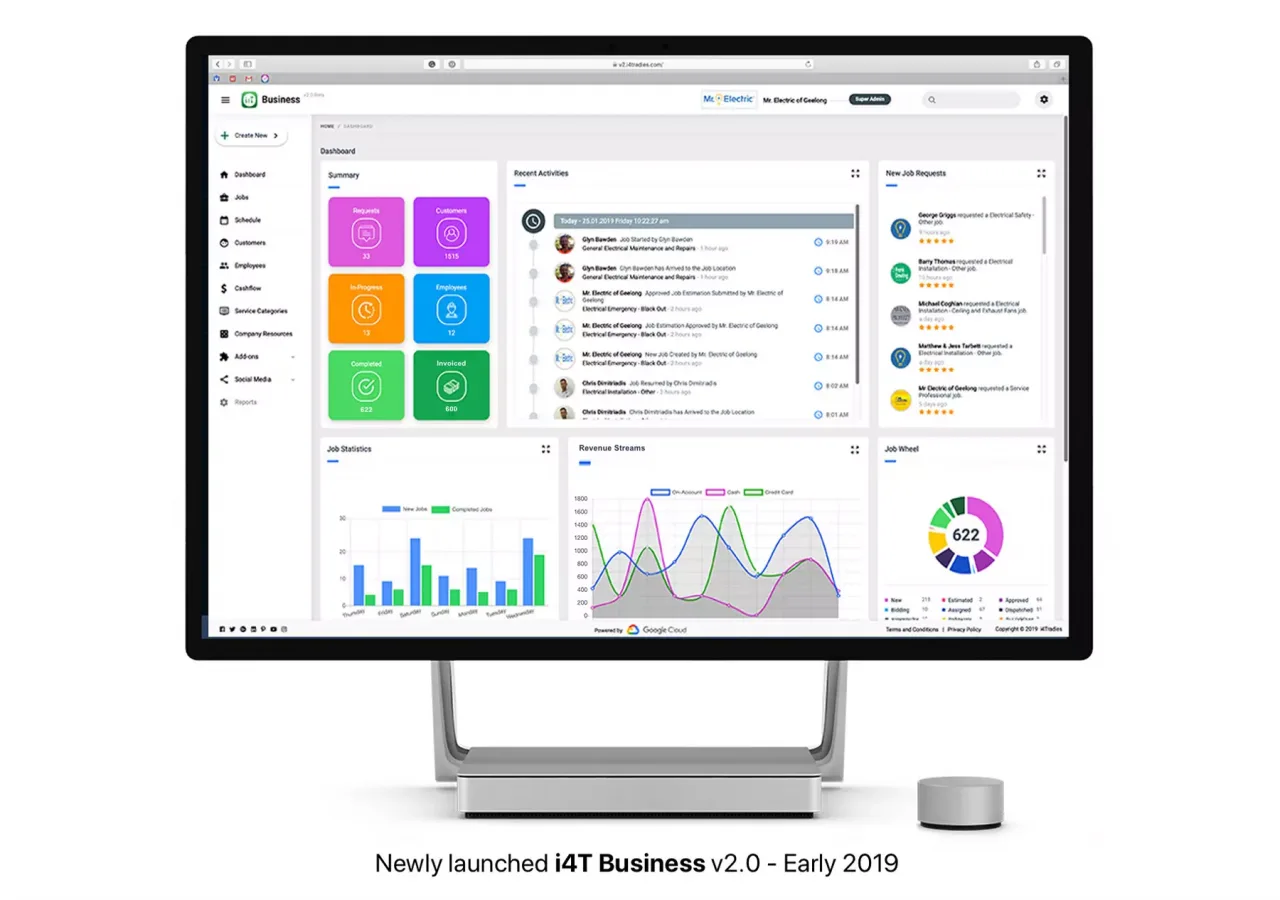
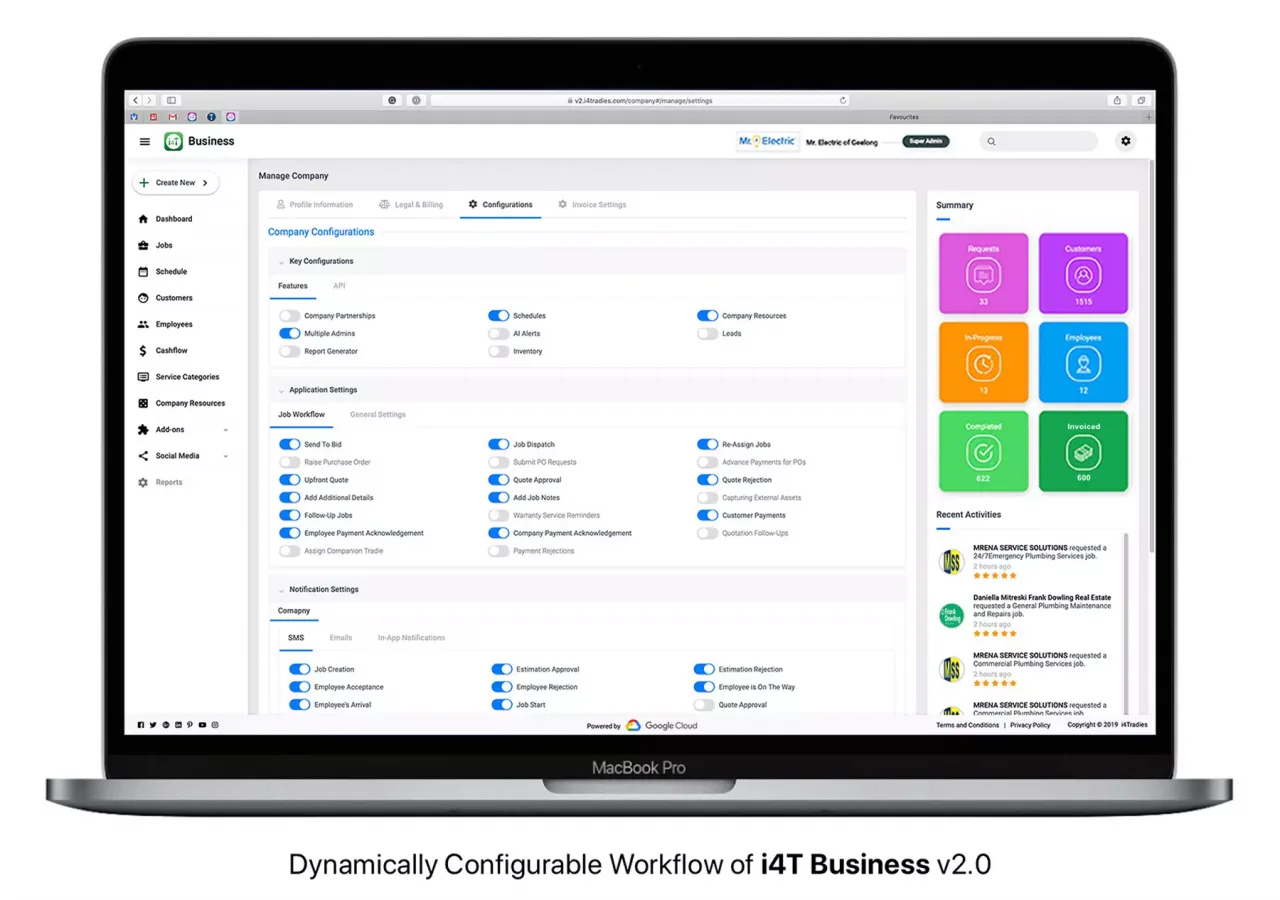
“We designed the new i4T Business Web Platform in a pure Modular Blueprint. All the advanced functionality is introduced as Configurable Options which makes the platform extremely customisable and tailored to our unique customer expectations.”
Being a Google Cloud Platform Partner was a significant advantage for us in launching our i4Tradies Platform in the GCP in a highly scalable global deployment. We rearchitected our platform to be multi-currency, multilingual & multi-time zone making it ready for our ambitious plans to go global within a short window of time.
Having built a highly comprehensive cloud based Web Platform for the Trades Business Owners, we wanted to be enormously thoughtful when introducing the same product as a mobile app to them.
This is where most of us as software developers fail. We tend to ask the wrong questions such as:
“How can we put all these features in to the small screen real-estate of a mobile app?”
whereas the actual questions should be,
“Why does the customer need a mobile app?”
whereas the actual questions should be,
“What features do they expect to have at their fingertips to be used most frequently?”
With Design Thinking & Lean Startup processes it gave us the correct path to move forward with and come up with our reinvented app, which is significantly simplified compared with the app it replaces with while having considerably advanced features.

And we did the exact same for the i4T Employee app as well.
This app is targeted to a highly unique set of users who are Tradies who work as Employees for Trades Service Companies. They have to use the app while doing actual physical jobs at the Consumers’ premises. They are very tight for time and have very low tolerance for technology being a barrier to perform their highly physical tasks.
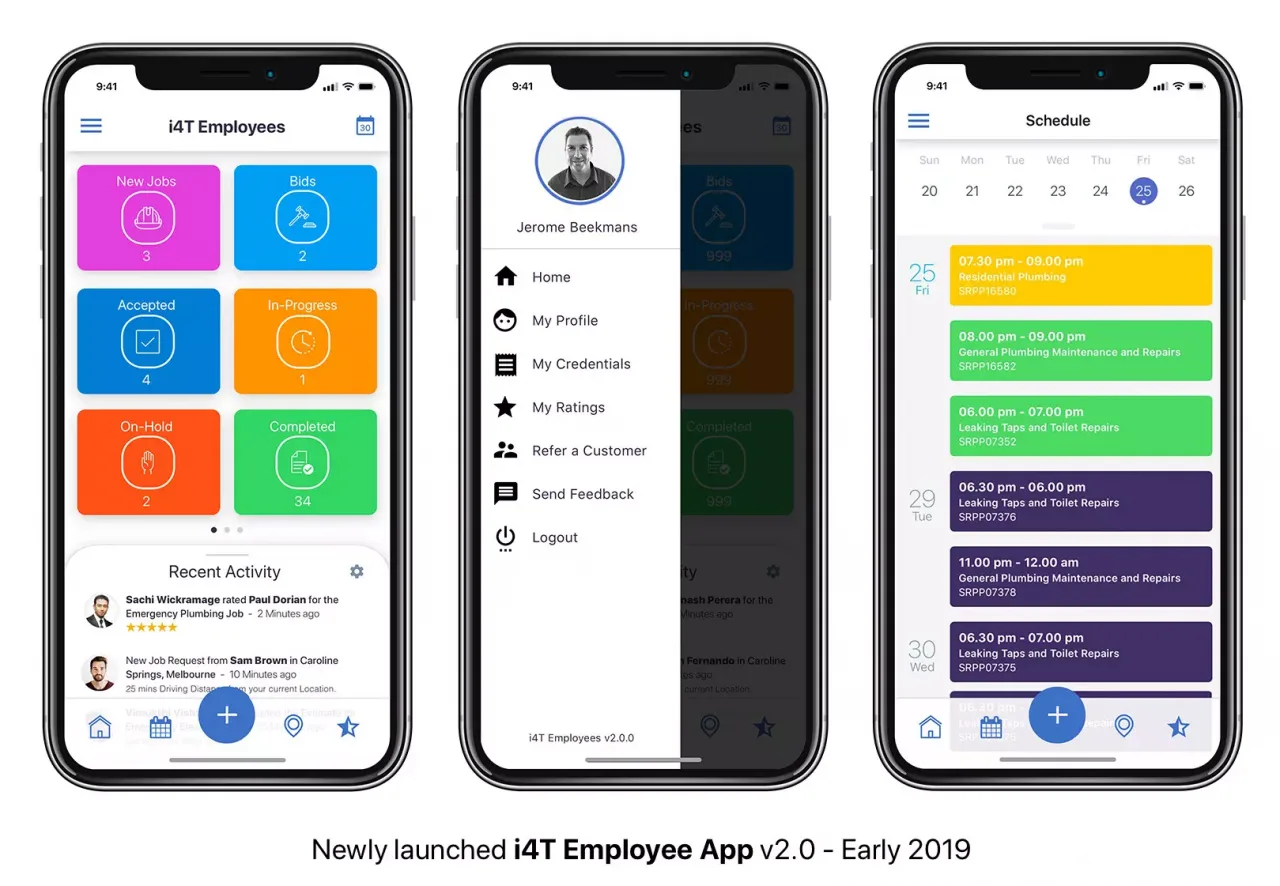
Do we believe now this is it? NO.
We envision to continuously disrupt the Industry
Having said that, Disruption is a double-edged sword. We’re always on the brink of a new technology, and the same technology that was cutting edge when we first launched might be antiquated in a year’ time.
To sustain our growth, we need to constantly be starting from scratch, introducing new tools and processes that disrupt our existing setup. This is what agile software development is all about.

At the end of each sprint, we get to reflect and hit the reset button on our entire process to make it better. It’s not just about iterating new features, it’s about creating new procedures so that our product offering and teams are constantly improving, keeping us one step ahead of the rest.
Hot off the press!
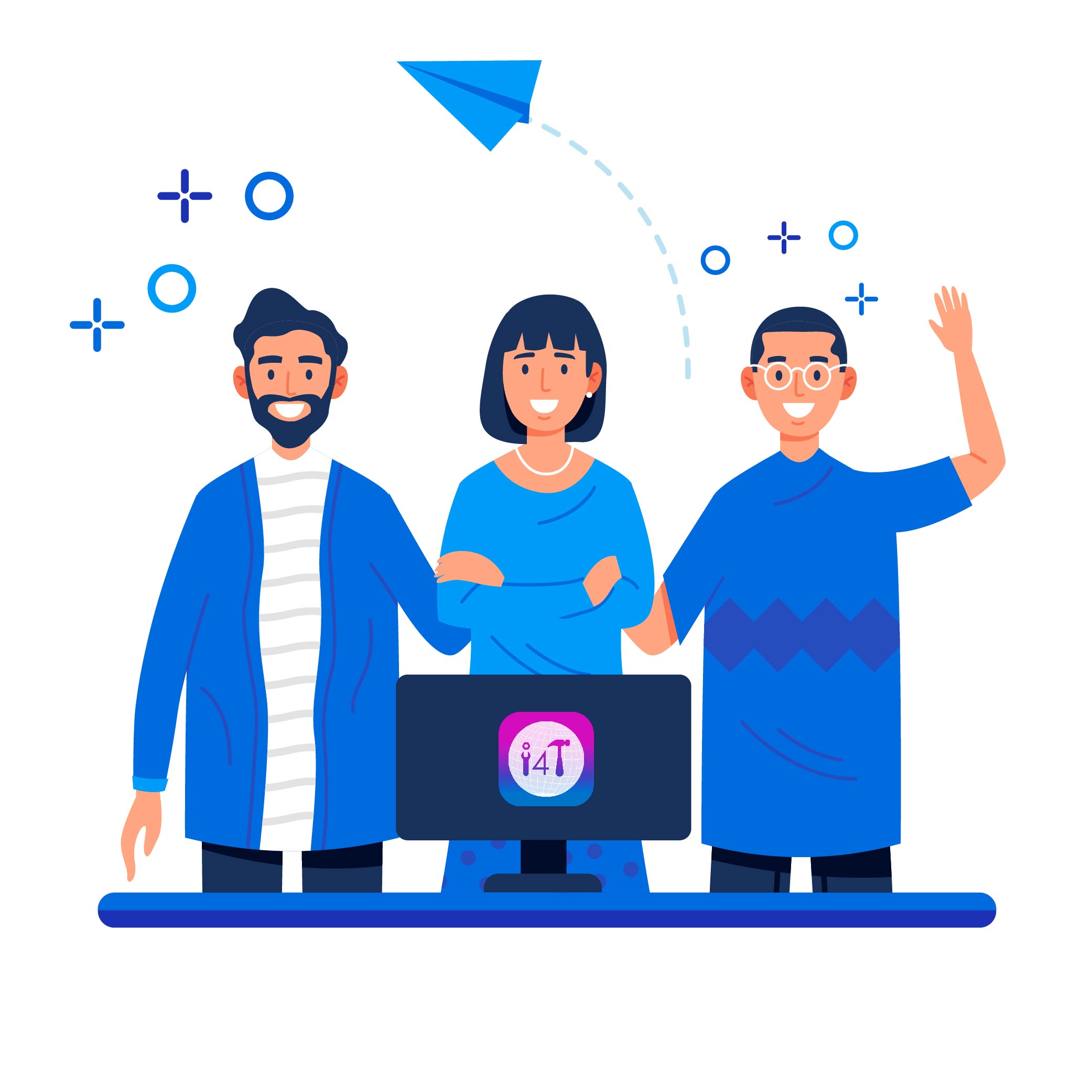
With our cutting-edge technology and in-depth knowledge of how the Field Service Management sector operates, the i4TGlobal Team loves to share industry insights to help streamline your business processes and generate new leads. We are driven by innovation and are passionate about delivering solutions that are transparent, compliant, efficient and safe for all stakeholders and across all touch points.
